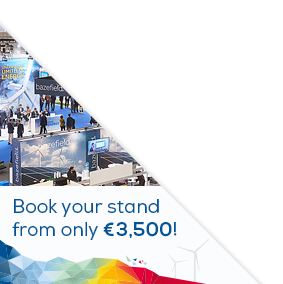Posters
Siblings:
ProceedingsProgrammeProceedingsSpeakersPostersContent PartnersElectrification StageMarkets TheatreR&I ActivitiesStudent DayProgramme Committee & abstracts reviewersPresenters dashboardCome meet the poster presenters to ask them questions and discuss their work
We would like to invite you to come and see the posters at our upcoming conference. The posters will showcase a diverse range of research topics and provide an opportunity for delegates to engage with the authors and learn more about their work. Whether you are a seasoned researcher or simply curious about the latest developments in your field, we believe that the posters will offer something of interest to everyone. So please, join us at the conference and take advantage of this opportunity to learn and engage with your peers in the academic community. We look forward to seeing you there!

PO086: Power transmission from offshore windfarms with superconducting cables - practical solutions to long-distance cryogenic envelopes
Christian Geertsen, R&D Director, ITP SA
Abstract
Typical windfarms generate power in the range of 1 GW. The power is usually transmitted to a High Voltage transformer, which together with one or multiple export cables, are the costliest single ticket elements of such an offshore development. With the increasing distance to shore of new developments, these costs increase. Superconducting transmission cables are an opportunity to either decrease those costs by transporting the power at lower voltage (and thus saving on the transformer units) or creating bulk transmission cables that funnel multi-GW power from several windfarms, such as could be envisaged with the construction of energy islands. The superconducting cable technology is mature and field proven in other industrial environments and has been used for power transmission in urban areas where the significantly smaller footprint of cable and transformer stations have led to an economical advantage. A brief review will identify technology gaps to an offshore application. Superconducting cables need to operate at a temperature of 77K/-196°C or less to be effective. This is achieved by installing the cable inside a double-walled pipeline (cryostat) that allows flowing liquid nitrogen, LN2 (or other cryogenic fluids) along the cable while minimizing heat ingress from the environment. The existing solutions for cryostats have been developed for land use and are not well-suited for a harsh offshore environment with little to no access for maintenance. Based on its rigid pipe technology for LNG, ITP has developed a thermomechanical design for a reeled, cryogenic pipe-in-pipe hosting superconducting power cables. Thermohydraulic modelling of the system establishes the conditions for its applicability to long-distance offshore transmission and provides a comparison with historical solutions.







